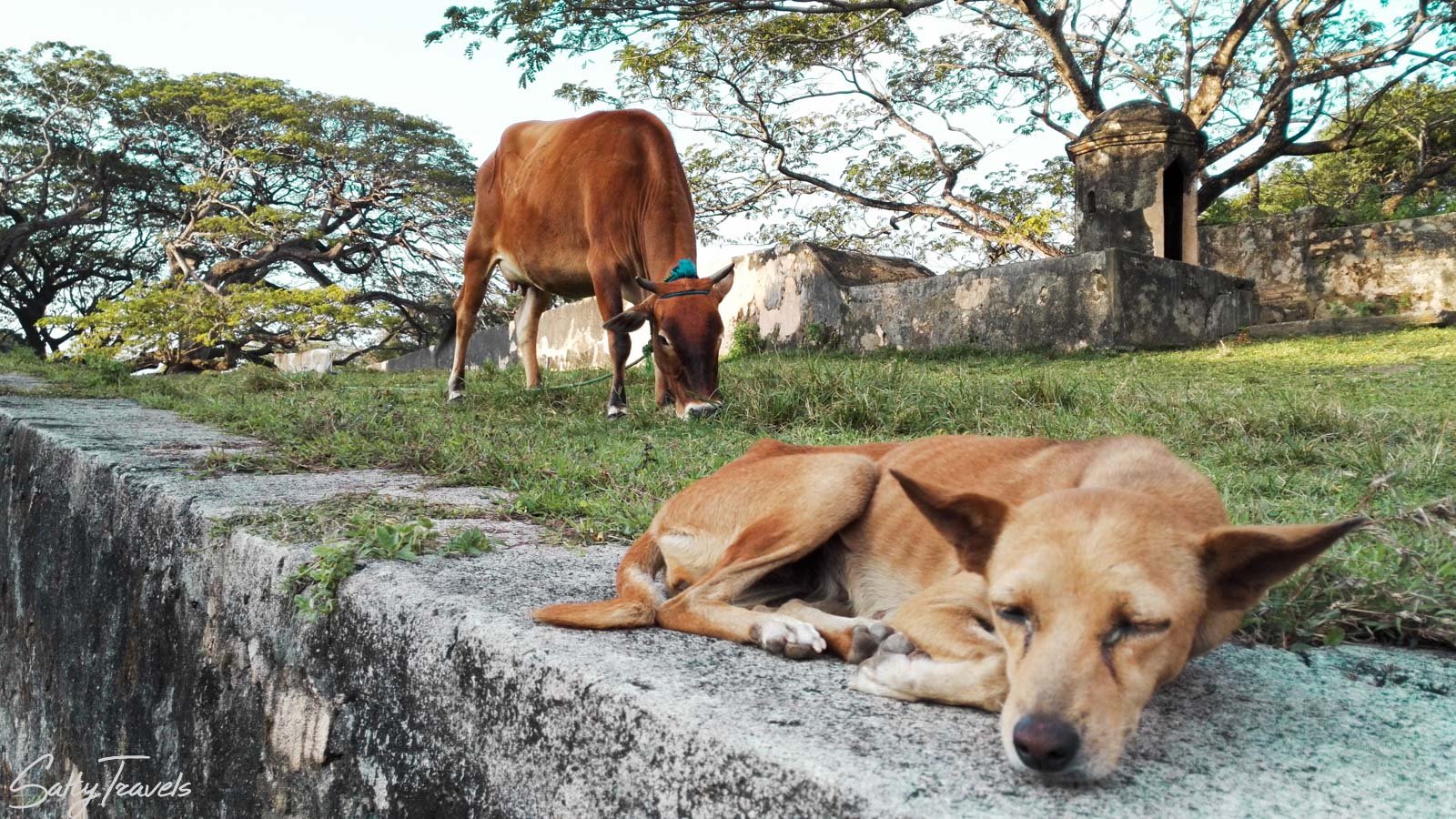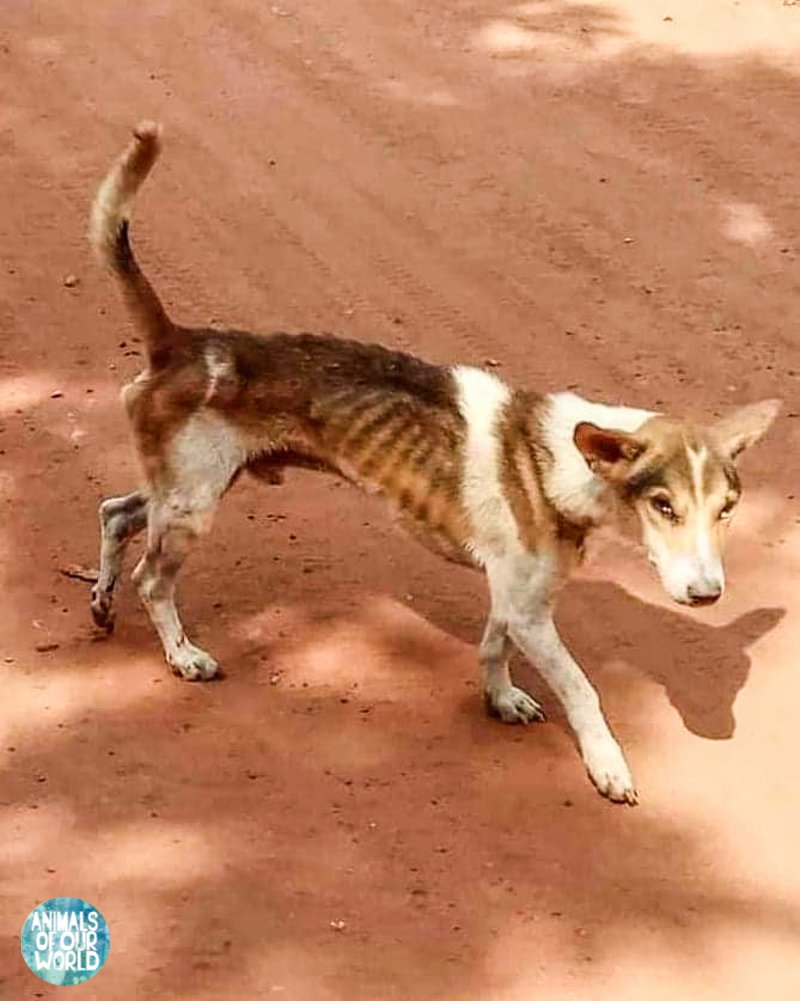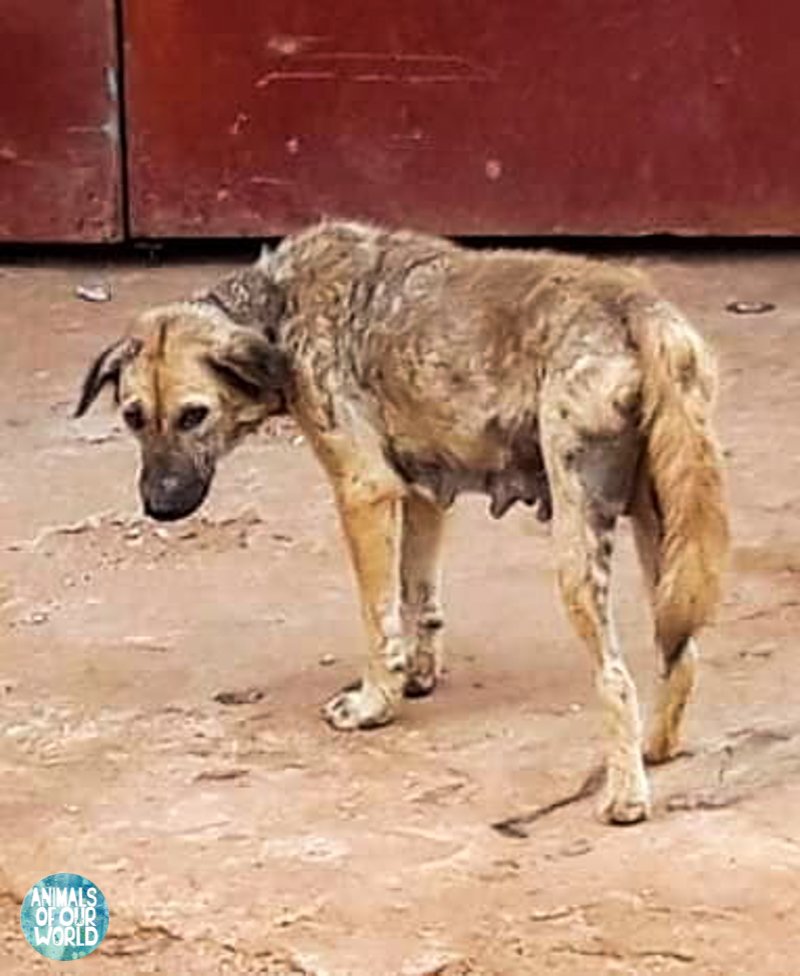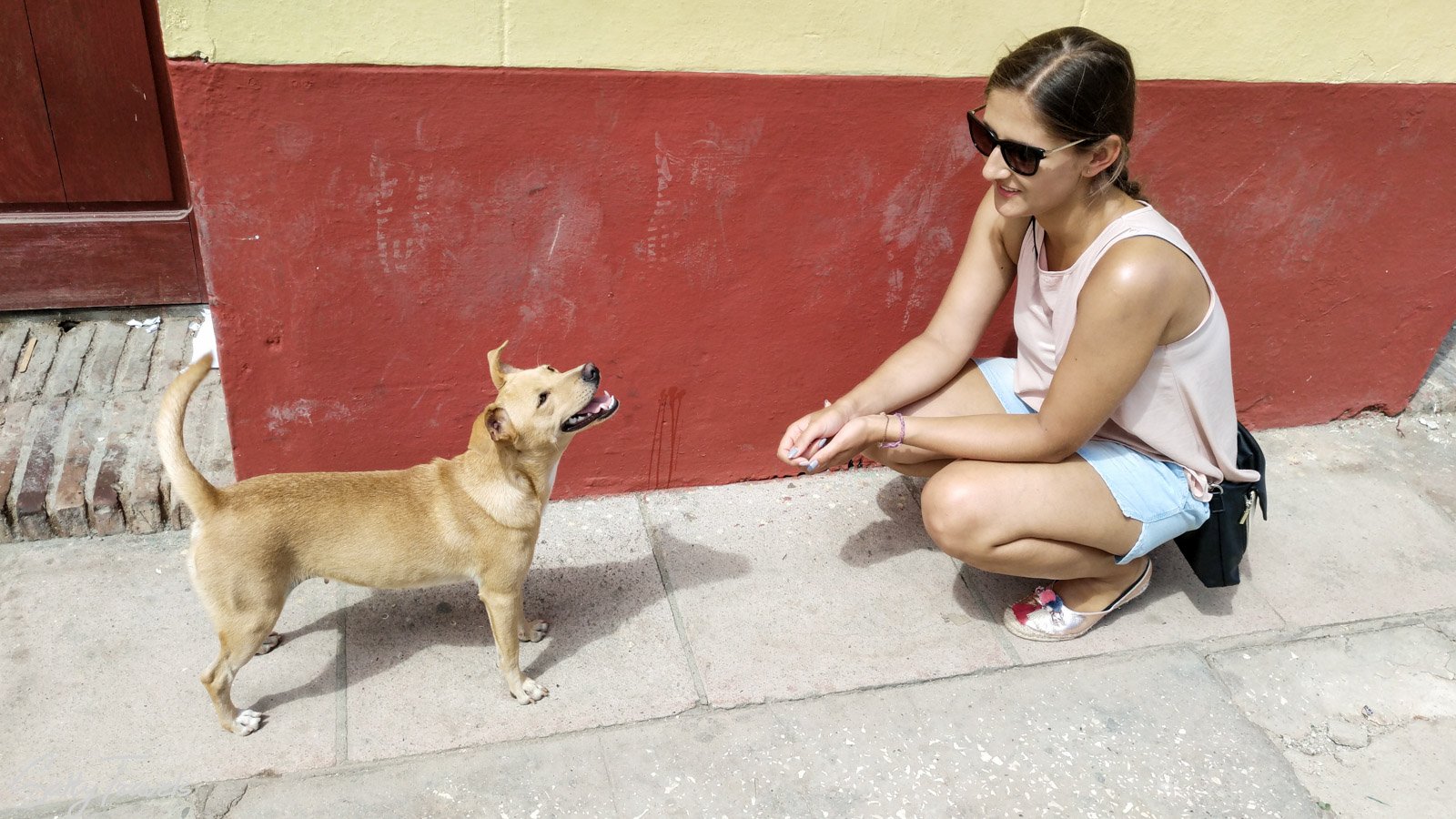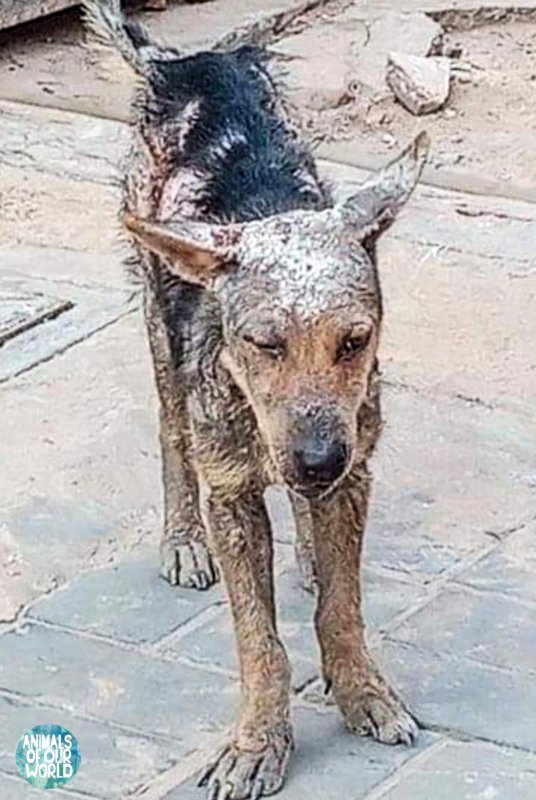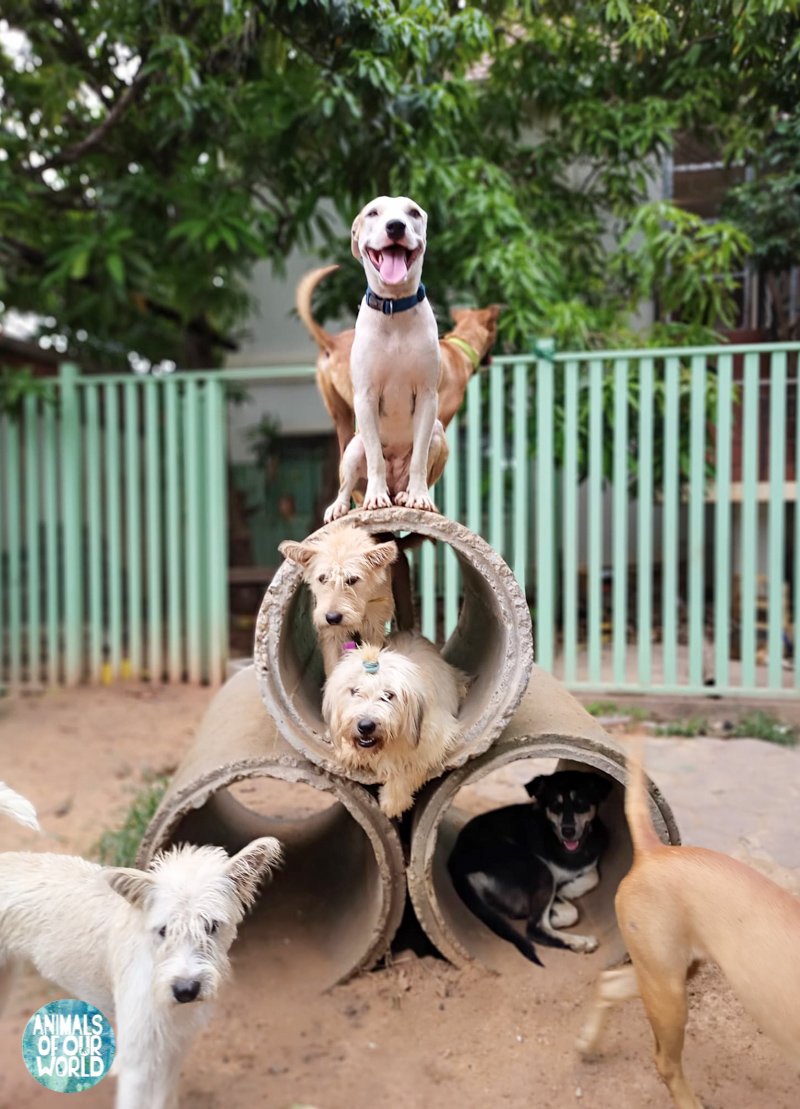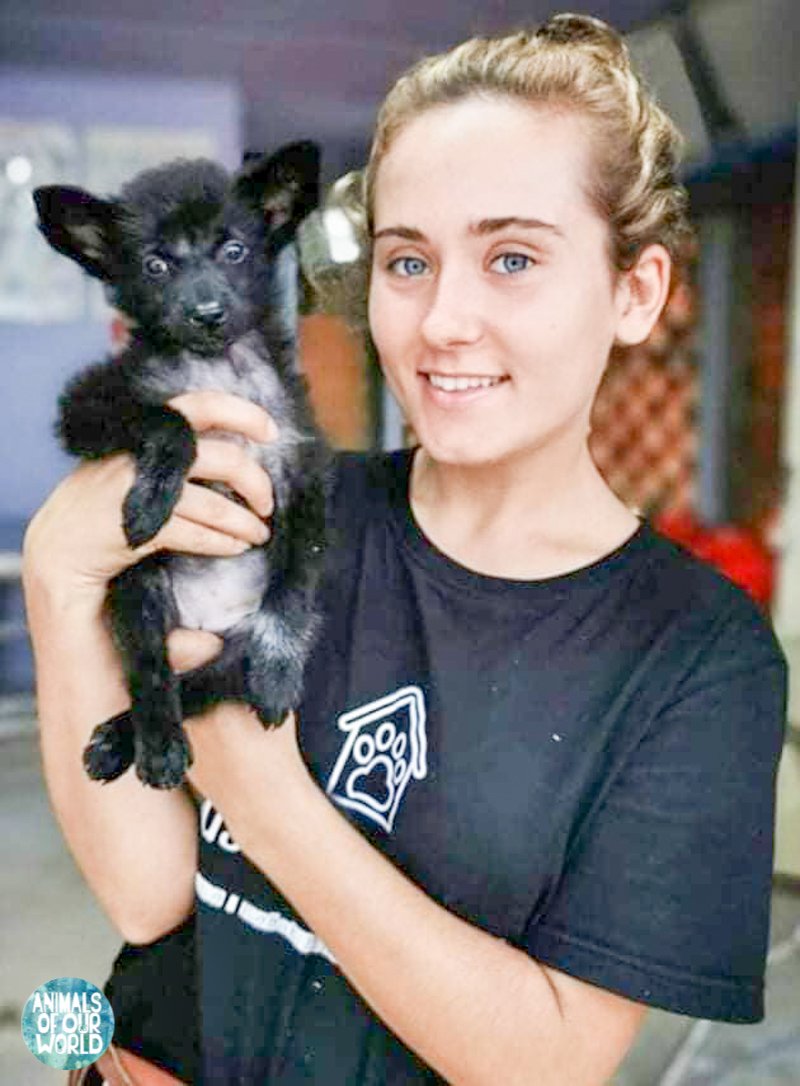What To Do When You Find a Stray Dog or Cat While Travelling?
During my travels through Asia, I was witnessing the suffering of stray dogs and cats way too many times. Mainly in countries where dogs aren’t human’s best friends. Where people are not aware of how much pain uncontrolled breeding is causing. Where some individuals lack empathy to push the break when they see a dog crossing a street. Sometimes it’s caused by the culture or world view, sometimes by the lack of knowledge or by bad conditions people live in.
However, the local attitude towards animals doesn’t mean that nothing can be done. There are plenty of different ways to help unwanted, sick and starving animals.
Table of Contents
Can travellers help a stray dog or cat?
I wrote this post because while following the activities of some animal charity organizations from Asia, I realized that as a traveller and animal lover I didn’t do enough. I met on my way a lot of suffering dogs and cats but because of lacking knowledge I didn’t react and I regret it till now…
It’s easy to find an excuse while travelling: I will miss the bus, I will have to skip a sight, I will have to change my plans. A lot of times I was also saying to myself “this dog lives on the street so he will survive somehow” or “I’m not able to help this dog because tomorrow I have to leave this place anyway and I can’t take him with me”. But the truth is that very often even a tiny little bit of engagement and time is enough to save an animal’s life.
What to do when you find a stray dog or cat while travelling?
1. Prepare yourself in advance
All around the world people create charity organizations to help sick and homeless animals. In Asia for example these organizations are very often founded by expats and supported by the local community and animal lovers overseas.
If you are going to a country with a lot of homeless animals, it’s a good idea to do a small research and prepare a few organizations based in the area you plan to travel to. You can also look for individual animal rescuers on different FB groups for expats or add local shelters and vets to your list.
2. Ask for help
Thanks to the research you did in advance, you will be able to react immediately in case an animal needs your help. For example, if you find a dog or cat hit by a car, you just have to contact the closest organization, shelter, or vet and ask for help. Most probably you will have to wait till a volunteer arrives.
It’s also a good idea to ask around and try to find more information about the animal or maybe even its guardian/owner. It is likely somebody knows something and it can make an unsuccessful rescue, successful.
“AnimalsOfOurWorld is ALWAYS available by messenger to offer advice and guidance to backpackers when helping to save the life of stray cats and dogs, no matter where you may be.” – Georgia Kaczorowski
If you are on the go and you can’t wait, please at least send a short message to a local animal rescuer saying: today I saw a dog hit by a car close to the crossing of roads xyz. Sometimes even a FB message can save an animal’s life. In case the animal is moving a good idea is to send also a photo, so it will be easier to find it.
My example: Once I was going from Poland to Vienna and saw a dog hit by a car on the highway. I wasn’t the owner of the car so I couldn’t stop it and make other people wait. But I searched quickly on GoogleMaps for the closest animal rescue organization and wrote them a message describing the situation and send them the approximate location of the dog. They took it from there and although, in the end, they couldn’t find the dog (somebody got there faster) I did everything I could.
3. Bring the animal to a shelter or a vet
Depending on the situation it can be also a good idea to bring the animal directly to the vet. After an car accident an animal’s life often depends on how fast it will get professional help.
If you choose this option you have to be aware that most probably you will have to pay the bill yourself and afterwards it will be necessary to find a foster home or an organization that will take care of the animal at least during the recovery process.
There is always a way to find help. You can try to bring the dog or cat directly to an organization or a shelter, but remember to call them first and ask if that’s ok – they usually have limited resources and place!
4. Give some food
While travelling you definitely already saw a lot of starving dogs and cats. If you have the possibility to feed them with something delicious, do it! Maybe this small gesture will give them the strength to overcome an illness, just survive a few more days or at least spend the first night in weeks or months with a full belly.
My example: When I was travelling in Sri Lanka I bought there a package of dog food and carried it with me just in case. However, mostly it turned out that street dogs were used to eat the table rests and won’t eat any pedigree. So my unfinished dish or dog food mixed with it was the best option.
Keep in mind that although stray dogs are used to the local kitchen, they shouldn’t eat very spicy dishes, because they can’t digest it.
5. Give a little bit of attention
There are also situations when animals don’t need food or any medical help. Because of whatever reason the local community is taking care of them. However, such dogs and cats lack often attention and affection. Dedicate few minutes of your time to pet a stray dog or cat – it will definitely appreciate it and you will be a good example for others: locals and foreigners.
My example: When at the end of our two-month backpacking trip through SE Asia we came to Siem Reap in Cambodia, three super sweet ginger stray kittens were waiting for us at the hostel. I fell so madly in love with them that I spend most of my time in Siem Reap playing with them. It was amazing for me and for them <3
Are these really stray dogs?
Many dogs in Asia are free-roaming dogs and not actually stray. They may have somewhere they call ‘home’ that doesn’t fit the picture of the western loving homes we imagine. However, that doesn’t mean they always get the care they need.
There are many situations when people (for example in Cambodia or Sri Lanka) do not understand why their dog is sick and how they can even help. Maybe they don’t care, or maybe they do care and cannot afford the treatment. Every case is different and getting more information from the local community will create the bigger picture in order to get the desperate help the animal needs.
What do you need to be careful about?
Before your trip, people will most probably tell you not to get into any interaction with stray animals because it’s dangerous. And they are partially right… Contact with a homeless animal in undeveloped countries, for example in Asia, might be risky because animals are carrying dangerous illnesses and parasites.
But in case you are an animal lover like I am, you will very quickly realise that you can’t resist picking up a small kitten or petting a sweet stray dog. If you understand what I mean, then you also should know these basic rules in order to stay safe:
- Do not give food to stray animals from your hand, because they can accidentally bit you if they are very hungry. Put the food on the floor so the dog or cat can eat it. Also, don’t try to take the food away from them. They might react aggressively.
- Approach an animal to pet it only if it also wants it. You never know how an unfamiliar dog or cat will react when a stranger reaches out his or her hand very quickly towards them.
- Do not approach dogs or cats that react aggressively without having appropriate experience and background knowledge.
- Because of different parasites, it’s very important to wash and disinfect your hands every single time you had contact with stray animals.
- If an animal is in pain it can react aggressively when being touched – so be very cautious when picking up a dog or cat for example after a car accident.
- MOST IMPORTANT: If there is any situation in which you feel uncertain what to do or overwhelmed, don’t make any rash actions that will put you at risk. Call as fast as possible for help and let experienced people help you.
REMEMBER: These animals don’t know you and depending on their previous experiences with humans, which might be very bad, you might be another potential danger to them. Their thoughts and feelings need to remain the main focus. Patience and delicious food is usually a winner.
Dogs with skin diseases
Many dogs in countries with tropical climate have skin problems. Hair loss and skin crusting are mostly caused by mange or tick fever. As a result, some stray dogs are looking very sick and a lot of people are fearful that these skin conditions will impact their own health if intervening.
Most skin conditions will not affect humans by following basic hygiene rules. Moreover, the most common ones, like tick fever or mange, can be treated very easily. Of course if you are unsure what to do always ask for help but don’t forget that the strays that look the most neglected, are the ones that need our help the most. Please don’t look away!
Infectious illnesses
As mentioned before, animals may carry different infectious illnesses. However, most of them are not contagious to humans. “In Cambodia, we see a high percentage of tick disease, parvovirus, distemper, TVT Cancer cases. Not one of those illnesses is contagious to humans. Basic hygiene like washing your hands and carrying alcohol with you at all times should be absolutely fine.” – Georgia Kaczorowski from AnimalsOfOurWorld.
Nevertheless, this is very often the reason why many will find an excuse to not help the sick animal in need. It’s a lack of education about illnesses cats and dogs are suffering from in that particular country and the scary stories we hear as westerners from our friends and families… That’s why it is so important to do some research before embarking on our travels and familiarize ourselves with the reoccurring illnesses for strays in a specific country.
Rabies
One of the most dangerous illnesses that are carried by animals is rabies. Since it’s contagious to humans make sure you inform yourself if that disease is present in the region you are going to. Also, educate yourself on the signs of animals with rabies and never approach any animal with any symptoms.
Rabies cases are not frequent, but many touristic countries are not free from it. “We have experienced one case personally in three years of Animal Rescue here in Siem Reap, Cambodia. However, we’ve been aware of others. It’s not every day, every week or even every month case. But, we are aware that we could come into a case at any point.” – Georgia Kaczorowski.
Nevertheless, don’t be scared of rabies. Just remember to be cautious. Inform yourself well before travelling and consider getting a pre-vaccine. If you do get bitten by a stray cat or dog while travelling, don’t think twice about going to the hospital to receive a rabies shot due to a travel budget or injection scare – not matter if you got the pre-vaccine or not.
In case an animal needs desperately your help remember: it’s unlikely you’ll be bitten if you take the sensible steps to gain an animals trust with patience and delicious food. Also ask yourself: how would you react to this extra attention you’ve never received from a human before? Relate and connect to that animal. Some of them have been more neglected or traumatized than others. “You won’t regret the time you put into helping another stray cat or dog that desperately needs help, I promise.” – Georgia Kaczorowski.
Keep in mind: Not all stories end well
The truth is that it’s not possible to save every single animal. Although millions of people watch videos on social media which show amazing transformations of sick, homeless and neglected dogs, not all of these stories end well.
Some dogs are in such a bad state that when they finally find a safe place and eat a proper meal the adrenaline level caused by fighting every day to survive, which kept them alive, decreases and they just pass away. But the last moments aren’t irrelevant.
Imagine a dog hit by a car dying alone in a cold ditch for days or hours because of internal injuries. Even if the chances for recovery are not big, it’s worth shortening the suffering.
Take a look at this video and you will understand what I mean. I wish all animals could die in such conditions, listening to Georgia’s voice…
————————————————————–
This post was written with the help of Georgia Kaczorowski from AnimalsOfOurWorld – an animal rescue organization based in Siem Reap, Cambodia. Here you will find more information about them and also a link to donate to one of their amazing projects.
Thank you for your support and the amazing job you do! <3


